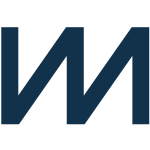About Autopilot
Autopilot is a visually-focused marketing software that provides tools for automating a customer’s journey. These include custom triggers that can be mapped out and automated ahead of time so that you can send the right kind of follow-up communications to the right customers. Autopilot can also automatically capture visitors, segment contacts using pre-established filters, and track the progress that a company is making towards a marketing goal. This allows users to make modifications that increase efficiency in real time.
About ChartMogul
ChartMogul can turn new and existing business intelligence data into valuable analytics that companies can use to improve their market performance. ChartMogul can take subscriber data - both created within ChartMogul and imported from other data sources - and generate visualized analytics for a variety of metrics that SaaS companies care about.
Popular Use Cases
Bring all your Autopilot data to Amazon Redshift
Load your Autopilot data to Google BigQuery
ETL all your Autopilot data to Snowflake
Move your Autopilot data to MySQL
Bring all your ChartMogul data to Amazon Redshift
Load your ChartMogul data to Google BigQuery
ETL all your ChartMogul data to Snowflake
Move your ChartMogul data to MySQL
Autopilot's End Points
Autopilot Contacts
Manage your contacts by updating, deleting, or retrieving contact data, including names, emails, phone numbers, the source of the lead and their affiliated company. With this information, you can more easily segment each contact into appropriate groupings that will make your marketing more targeted and effective.
Autopilot Smart Segments
Retrieve a list of existing smart segments, including the names and IDs for those segments. Then, gather data from a single smart segment to see relevant contact information, including how many contacts are grouped into that segment and who the first 100 contacts are. You will also get a bookmark link to the next batch of contacts, should there be more.
Autopilot Journeys
Get a list of Autopilot journeys that have API triggers, which includes their names and trigger IDs. Then, use that trigger to automatically add a contact to a journey via the contact’s ID or email address.
ChartMogul's End Points
ChartMogul Plans
Gather data about your subscription plans - like the subscription IDs, names, billing intervals, and the number of intervals that are charged at once - to evaluate the performance of each plan. This will help you better understand the effectiveness of your plans so that you can determine which ones are more or less successful as a whole.
ChartMogul Customers
Create, retrieve, or update data for new or imported customers in ChartMogul. This allows you to see important customer contact details, customer IDs, and valuable performance data including a customer’s MRR, ARR, and industry sector. You can then use that data to better segment your customers, which can provide more accurate and specific information about your business performance.
ChartMogul Invoices
Import invoice data for customers that you are tracking through ChartMogul, including customer IDs, dates of purchase, transactions, and any relevant line items. Then, use ChartMogul to create subscription data for those customers and use that data to track more specific revenue data, both in ChartMogul and in your other data sources.
ChartMogul Transactions
Track payments or refunds made on an invoice to see the transaction ID, type of transaction, transaction date, and whether or not the transaction was successful. This can help you get more accurate analytics from your invoice data. It can also indicate when there is an unusually high number of refunds, which could signal a problem worth addressing.
ChartMogul Subscriptions
Get a list of subscriptions that ChartMogul has automatically generated from invoice data. This endpoint returns several IDs - including subscription IDs, customer IDs, plan IDs, and data source IDs - that will help you to more easily track and integrate data between any of those parameters to create deeper, more accurate business analytics.
ChartMogul Tags
Use tags to track terms that are associated with a customer so that you can segment or monitor them more specifically. For example, you could tag a particular customer as “high priority,” “returning” or anything else that is relevant to your business, and then retrieve a list of customers who have been tagged with those attributes in order to analyze them as a segment.
ChartMogul Custom Attributes
Update customer data with ChartMogul custom attributes that are more specific to the needs of your company. This can include both tags as well as more complex custom attributes. Then, track those attributes in ChartMogul to get analytics that are focused on your particular business concerns.








